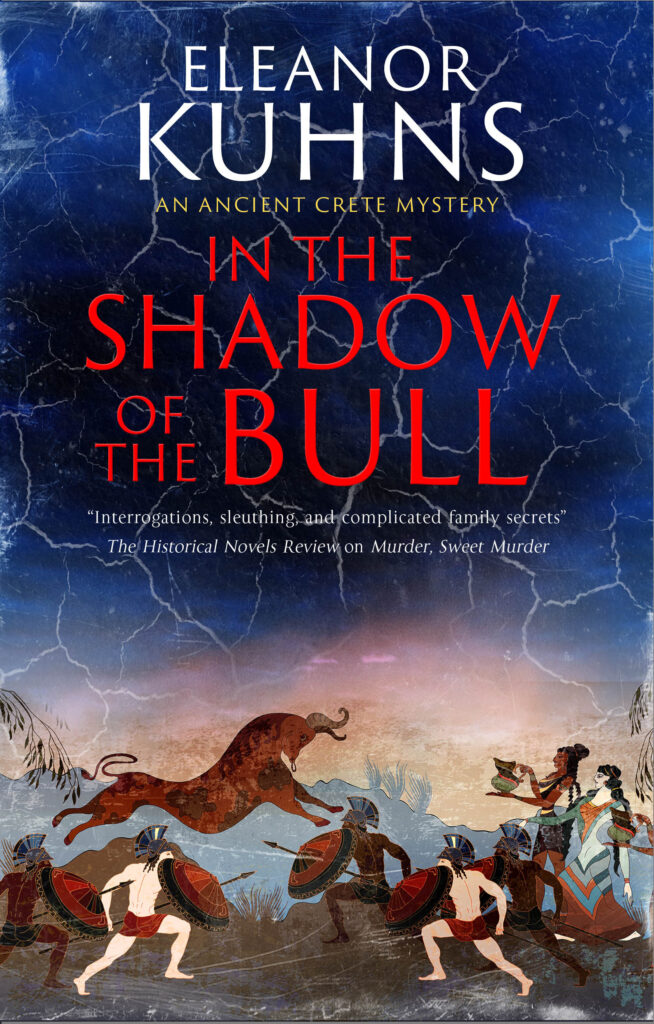The date for the release of In the Shadow of the Bull is now July 4 for the UK. No word on the release date in the US yet.

In an attempt to reveal what we know of this ancient culture, I thought I would begin with the bull. Bulls were sacred. I’ve read varying explanations. Is it because the Bull represented the male principle, even in a society with a Supreme Goddess? Is it because of the connection with Poseidon. also a God in this culture. (I have mentioned previously how much the Classical Greeks borrowed from the Minoans).
Whatever the reason, the mosaics, the statuary, the rites practiced were all centered around the Bull.
One of the practices was bull dancing or bull leaping. This is a feature of the Theseus myth. Since it was written by the occupying Greeks, it has a negative spin. In the myth, Minos, the ruler of Knossos, requires tribute from the mainland: 7 young women and 7 young men, to face the fearsome Minotaur in the labyrinth. (The creation of the Minotaur is another myth, a rather creepy one.) Theseus volunteers to be one of the tributes. Minos’ daughter Ariadne gives Theseus a ball of string and he is able to kill the Minotaur and lead the other tributes to safety.
Frescoes from Knossos show young men and women (probably teenagers) leaping over a charging bull. The bull dancer grasped the horns and flipped over the bull’s back. Another member of the team caught and steadied him as he landed. There seems to be no doubt that these performances occurred.
Remnants of mazes pictured in mosaics have also been found. But labyrinth, a synonym for a maze, is actually from the word labyrs, a sacred two headed axe used in religious rituals.
A stylized version of the bull’s horns, called the Horns of Consecration, were used everywhere. Examples have survived in Knossos.


